
[248] Papaver rhoeas, Poppy
Introduction
Papaver rhoeas, the (Common) Poppy, is a common and widespread wildflower associated traditionally with cornfields. Its red flowers are now associated symbolically with Armistice Day remembrance.
It is also known as the Corn Poppy, Annual Poppy or Flanders Poppy. The Shirley Poppy is a cultivar group derived from Papaver rhoeas that has a different floral appearance.
I will consider other species within the genus Papaver. Other plants in the genus Papaver are called Poppies and so are some other relatives in the subfamily Papaveroideae.
Taxonomy
Kingdom – Plants
Division – Vascular Plants
Class – Angiosperms (Flowering Plants)
Order – Ranunculales
Family – Papaveraceae
Subfamily – Papaveroideae (Poppies)
Tribe – Papavereae (paraphyletic)
Genus – Papaver
Scientific Name – Papaver rhoeas
There are many cultivars of this and other species and hybrids.
Name
Poppy comes from Old English probably from the Late Latin papaver, the name of this flower. The Latinized Greek rhoeas also meant the same plant. Somniferum means sleep-producing.
Description
There are about a hundred species in the genus Papaver but the taxonomic status of the genus is currently under discussion. It may be paraphyletic.
Papaver rhoeas is very easy to recognize in the field because so much about it is distinctive.
Its single stems are hairy bearing a pendulous hairy bud.

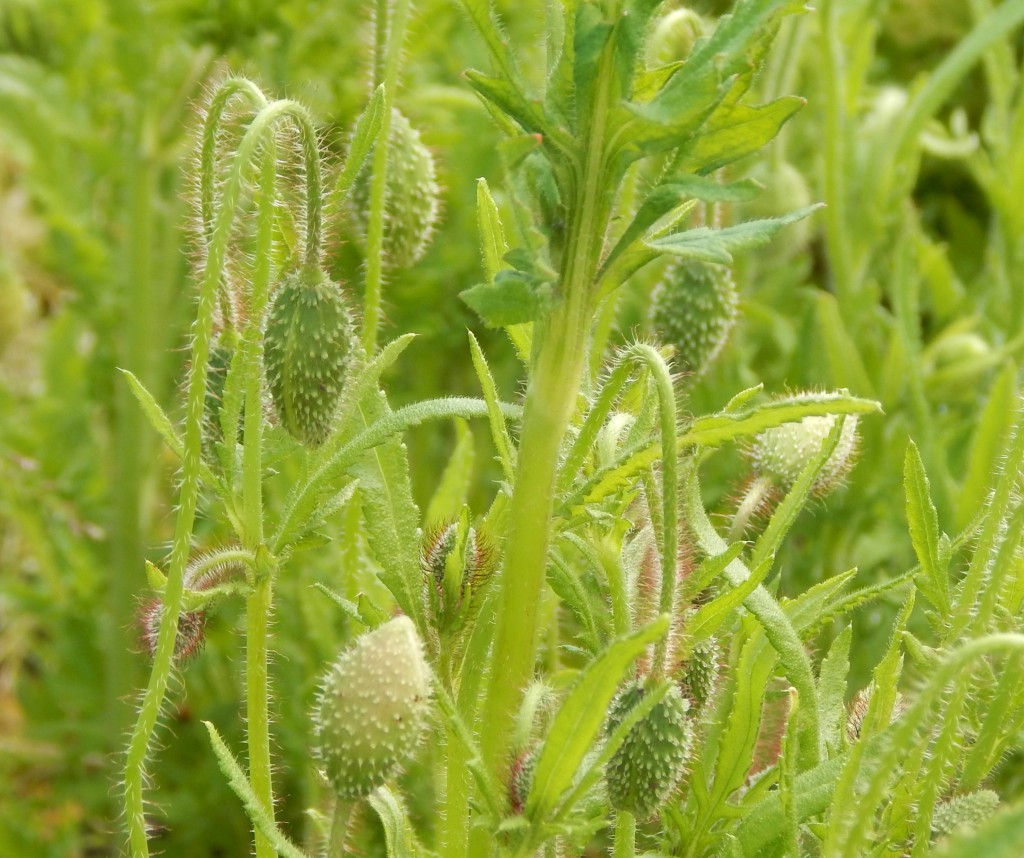


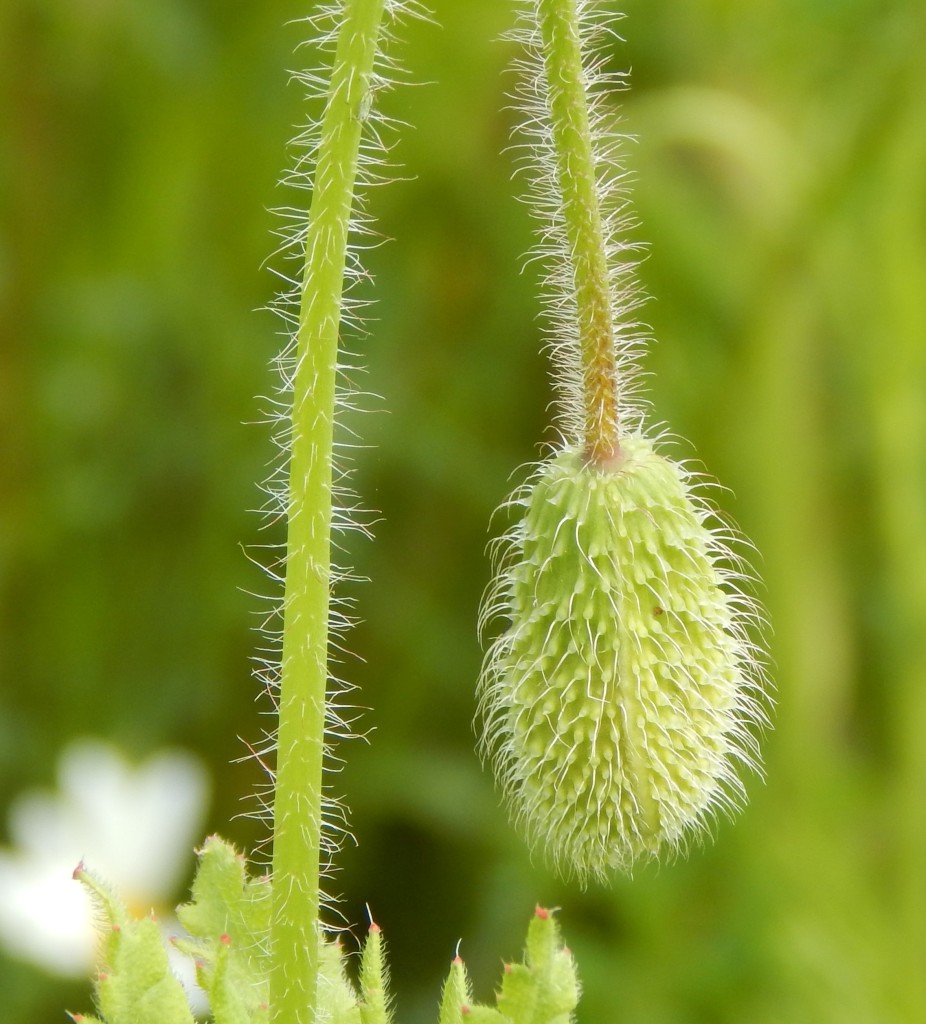

The flowers are vivid red, circular and open with a central dark spot.



The fruit is a distinctive capsule with a circular patterned top.

[You may notice some [217] Aphids in the last picture.]
Habitat and use
The Common Poppy is native to most of Eurasia and North Africa. It is widespread and common in fields and grassland and roadside verges.
Until the modern agricultural methods of the last Century the Poppy used to be a common agricultural weed in cornfields. It is now often used in the wildflower mixed plants that are sown in parks.
Papaver rhoeas is widely cultivated as a garden plant with many varieties and cultivars. This is also true for other species, especially Papaver orientale, the Oriental Poppy. The flowers come in various colours and forms.
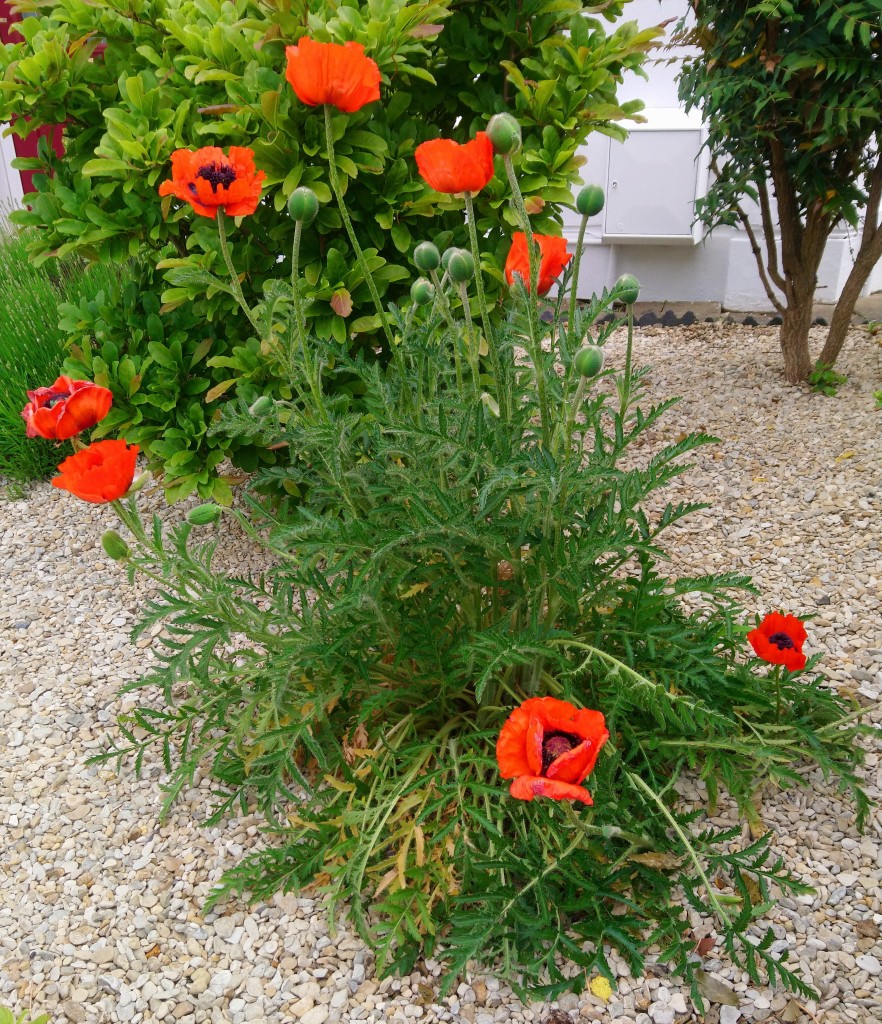
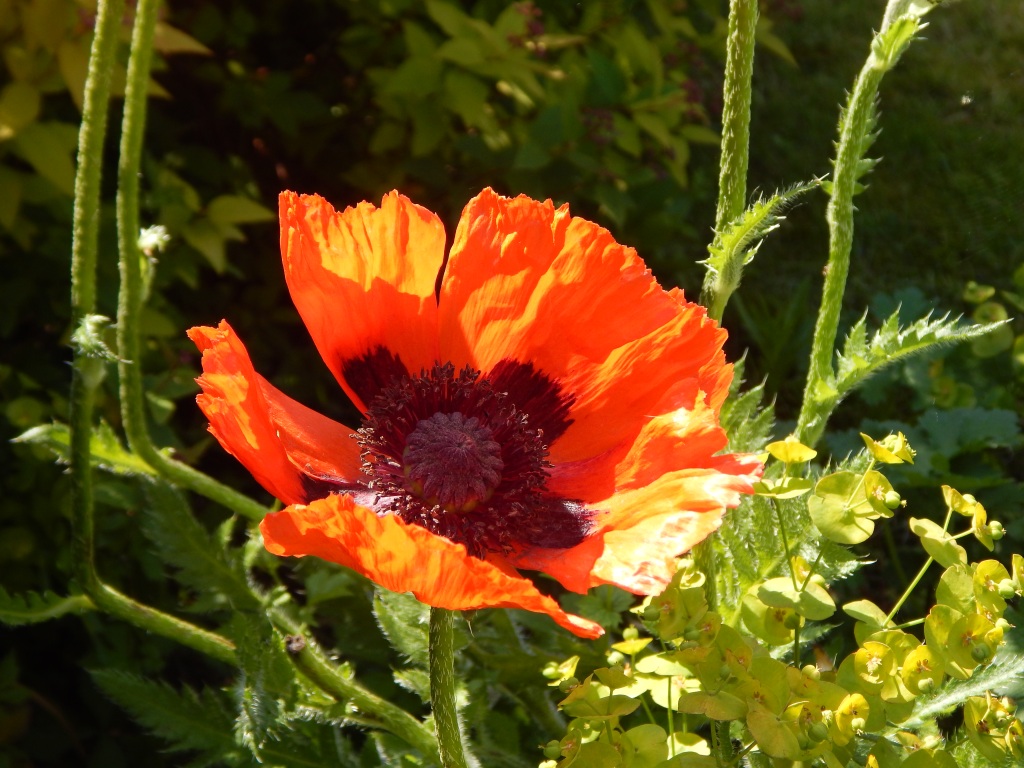
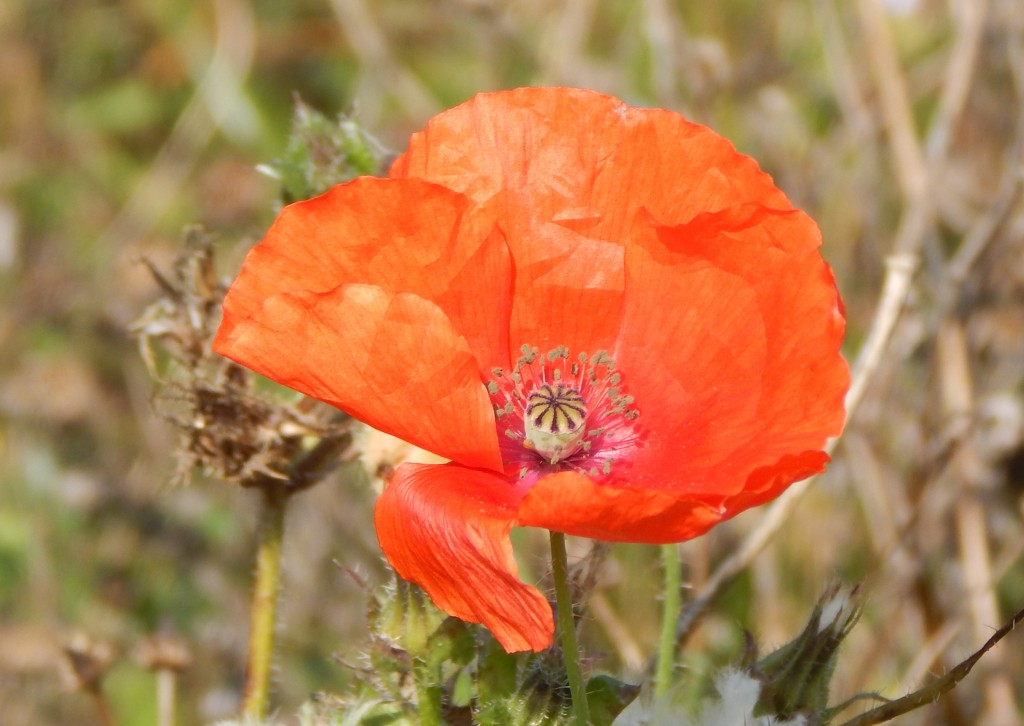
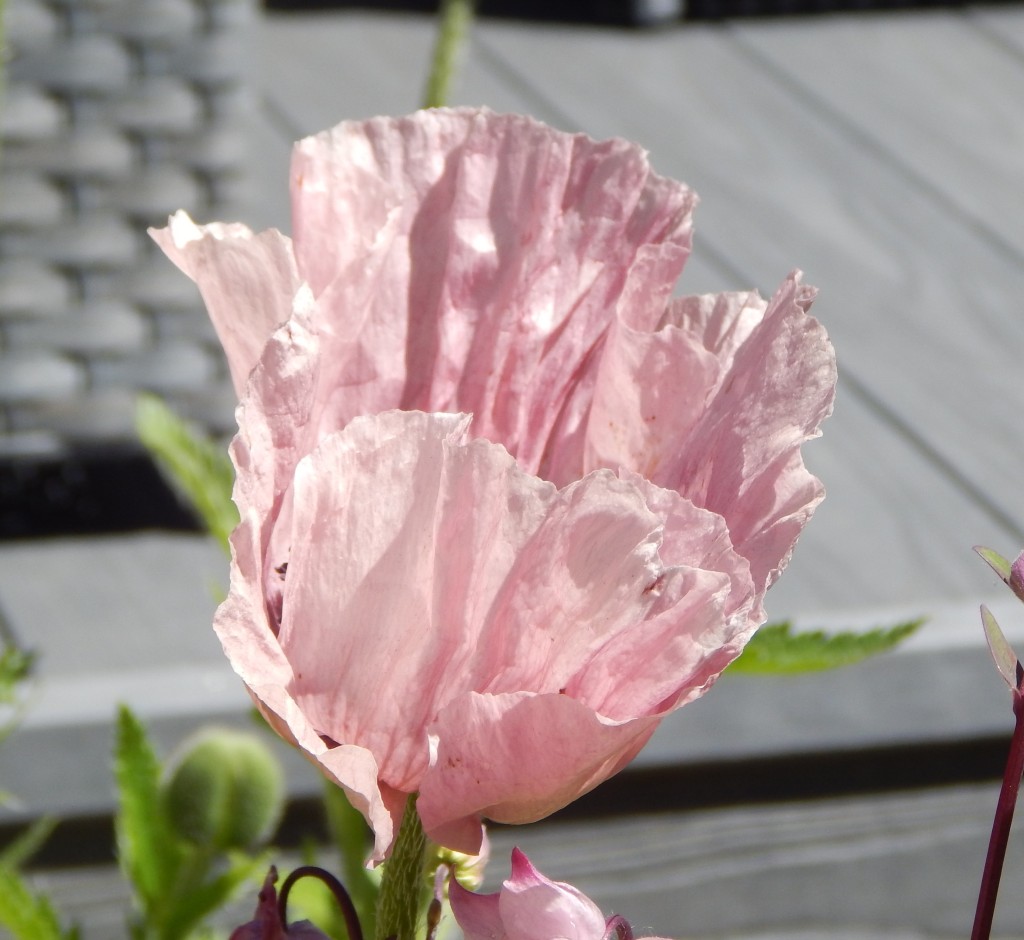

Other Notes
Papaver somniferum, the Opium Poppy, has been widely cultivated as a crop since Neolithic times for three products.
- Edible seeds known as poppy seeds, commonly seen associated with bread.
- Opium for use in the pharmaceutical industry and in the illegal drug trade.
- Thebaine, oripavine and other alkaloids used in the pharmaceutical industry to produce other drugs.
Some varieties of Papaver somniferum are cultivated as ornament plants and many varieties do not produce any opium.

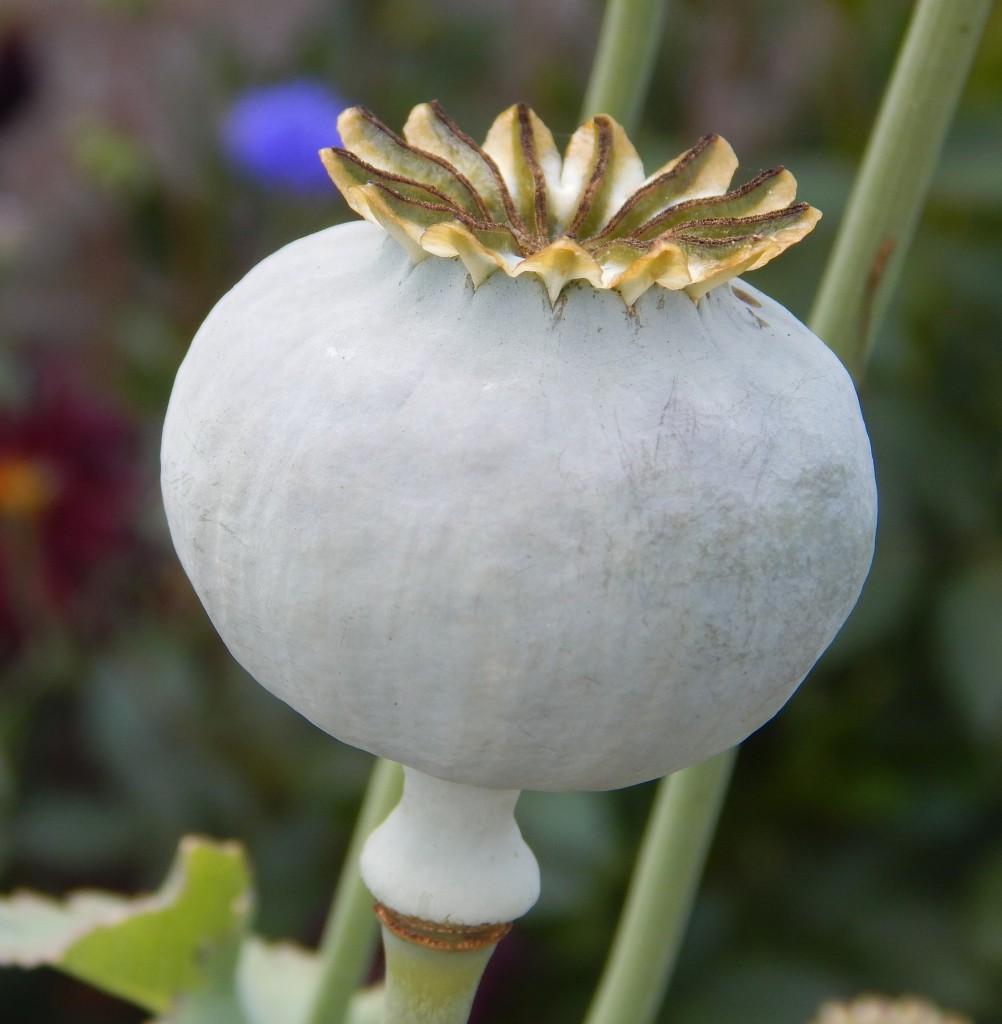
The Remembrance Poppy is very well-known in the UK but its significance does not extend much further than Commonwealth countries. It dates from just after the First World War and is associated historically with the fields in which parts of this conflict took place.
The poem, ‘In Flanders Fields’ was written in 1915 by Lieutenant-Colonel John McCrae.
In Flanders Fields, the poppies blow; Between the crosses, row on row; That mark our place; and in the sky; The larks, still bravely singing, fly; Scarce heard amid the guns below.
We are the dead. Short days ago; We lived, felt dawn, saw sunset glow; Loved and were loved, and now we lie; In Flanders fields.
Take up our quarrel with the foe; To you from failing hands we throw; The torch; be yours to hold it high. If ye break faith with us who die; We shall not sleep, though poppies grow; In Flanders fields.

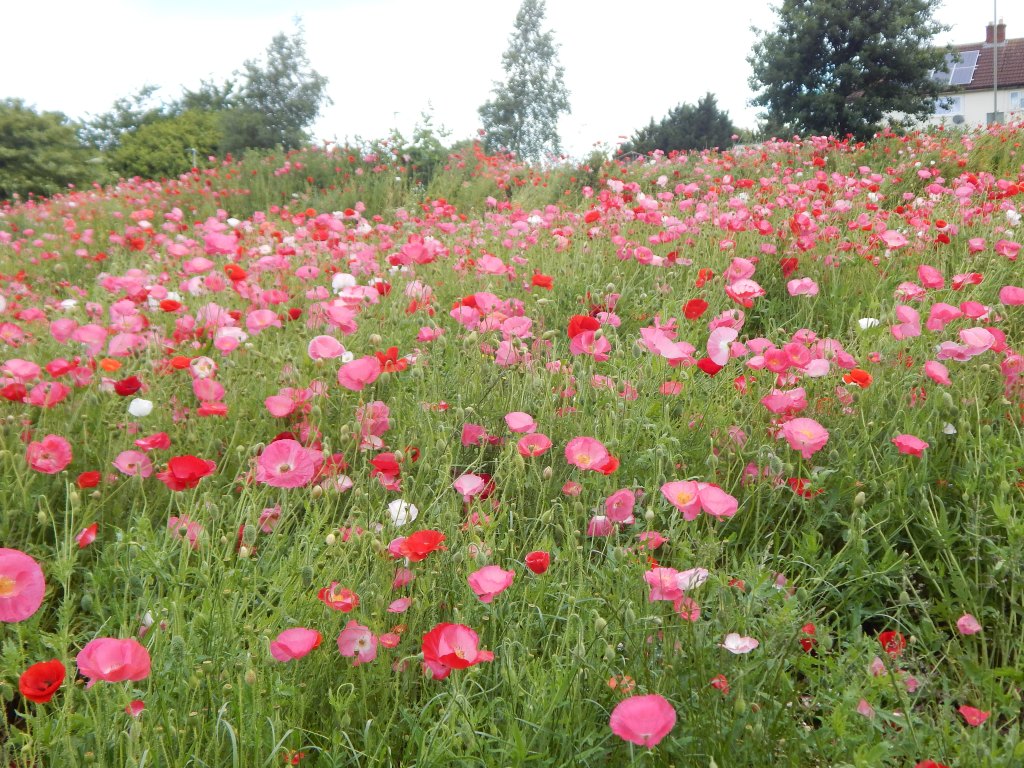

Even the poppies often sown in modern wild flower meadows in rural parks are probably not of wild origin. We see mixed red and pink flowers, not the standard red of wild poppies.
See also
Papaver cambricum, the Welsh Poppy, is similar in appearance to Papaver rhoeas but with a yellow or orange-yellow flower that does not have the dark centre. It is native to Wales, south-western England and mountainous areas within Spain and France. It prefers damp, shady and rocky locations and is now sometimes cultivated as a garden plant.
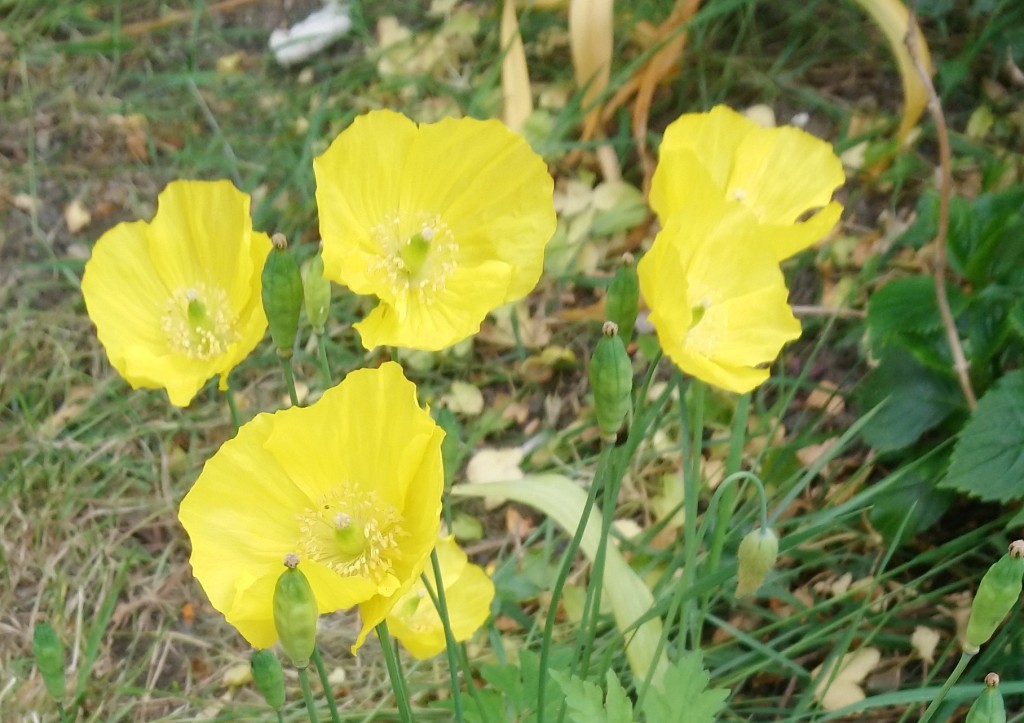
Eschscholtzia californica, a close relative is also cultivated as a garden plant. Its flowers are usually orange or yellow but can be red or pink

